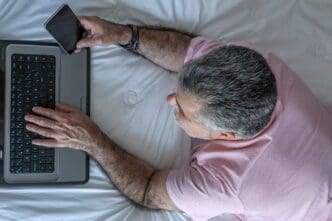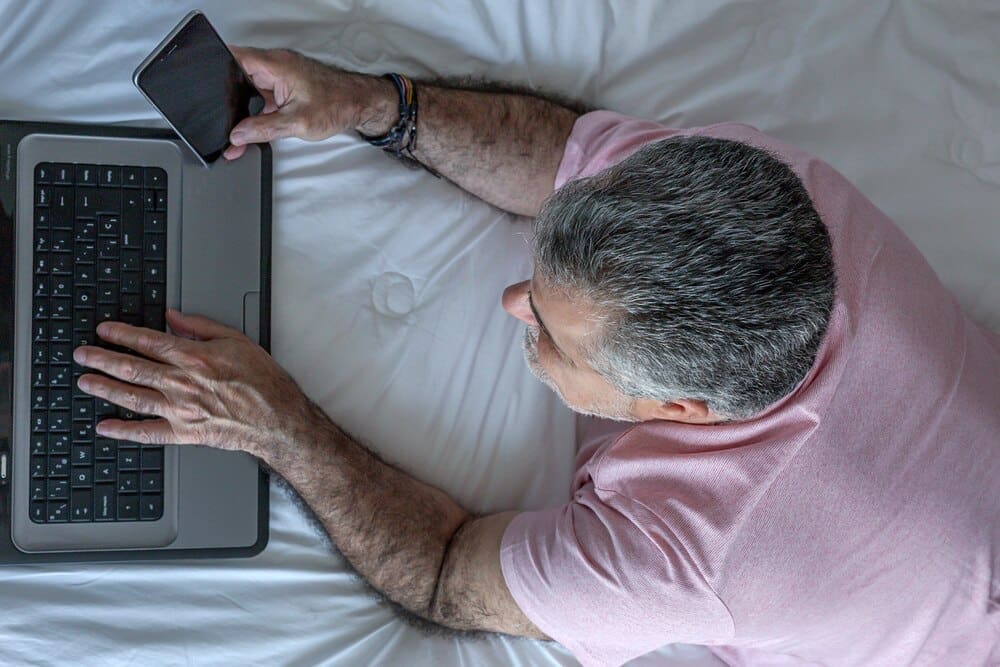In an increasingly connected world, the key to unlocking restorative sleep may lie in disconnection. For millions struggling with tossing and turning, the culprit is often hiding in plain sight: the smartphone, tablet, and television populating the one room that should be a sanctuary for rest. Health experts and sleep scientists are urging a return to an electronics-free bedroom, a deliberate strategy to combat the disruptive effects of blue light and mental stimulation that sabotage the body’s natural sleep cycle. By removing these devices and establishing a firm “digital curfew,” individuals can significantly improve their sleep quality, which in turn boosts mental clarity, emotional regulation, and overall physical health.
Why Your Gadgets Are Sabotaging Your Sleep
The science is clear and compelling: the devices we rely on for work and entertainment are fundamentally at odds with the biology of sleep. Understanding the mechanisms behind this disruption is the first step toward reclaiming your nights.
The Problem with Blue Light
At the heart of the issue is blue light, a specific wavelength emitted in high concentrations from the screens of our phones, laptops, and televisions. This light is a powerful signal to our brains, mimicking the brightness of daylight. When our eyes are exposed to it in the evening, it sends a confusing message to the pineal gland, suppressing the production of melatonin.
Melatonin is often called the “hormone of darkness” because its release tells the body it’s time to wind down and prepare for sleep. This process is a cornerstone of our circadian rhythm, the 24-hour internal clock that governs our sleep-wake cycles. Research from Harvard University has shown that exposure to blue light at night can shift these circadian rhythms by as much as three hours, making it significantly harder to fall asleep and wake up refreshed.
Mental Stimulation and Emotional Arousal
Beyond the biological impact of light, the content we consume on our devices is designed to be engaging and, often, arousing. Checking work emails, scrolling through a volatile social media feed, or watching a suspenseful drama keeps the brain in a state of high alert. This cognitive and emotional stimulation is the direct opposite of the calm, relaxed state required to initiate sleep.
This phenomenon, sometimes called “technoference,” creates a state of psychological arousal. Your heart rate may increase, your mind races with thoughts about a contentious comment or an urgent work request, and your body is flooded with stress hormones like cortisol. This is a recipe for insomnia, not rest.
The Pavlovian Response: Your Bed as an Office
Psychology offers another crucial insight through the principle of stimulus control. Our brains are powerful association machines. For healthy sleep, it is vital that the brain associates the bedroom—and specifically the bed—with only two things: sleep and intimacy. This creates a strong conditioned response where getting into bed signals to the body that it’s time to power down.
When you introduce other activities into the bed, such as working on a laptop, paying bills, or watching movies, you dilute this powerful association. Your bed becomes a multi-purpose activity center, and your brain no longer receives a clear signal for sleep. It becomes confused, associating the bed with wakefulness, stress, and entertainment, leading to difficulty falling asleep even when you are physically tired.
Your Action Plan: Reclaiming the Bedroom
Transforming your bedroom into a digital-free sanctuary is a practical process. It requires commitment, but the steps are straightforward and can be implemented immediately. Think of it not as deprivation, but as a deliberate act of curating an environment for optimal well-being.
Step 1: The Great Electronic Eviction
The most important and non-negotiable step is to physically remove all distracting electronics from the bedroom. This includes the television, desktop computer, laptop, tablet, and any gaming consoles. This single action eliminates the primary sources of blue light and the temptation for late-night stimulation.
If the idea feels drastic, remind yourself of the goal: to create a space purely for rest and rejuvenation. The temporary discomfort of this change is a small price to pay for the profound benefits of consistently good sleep.
Step 2: Rethink the Alarm Clock
For most people, the biggest obstacle is the smartphone, which doubles as an alarm clock. This keeps the ultimate distraction machine within arm’s reach all night long. The solution is to invest in a dedicated, single-function alarm clock.
Simple digital or analog clocks are inexpensive and effective. For a more advanced option, consider a sunrise alarm clock. These devices gradually brighten the room over a 30-minute period before your chosen wake-up time, simulating a natural sunrise. This gentle awakening can help regulate your circadian rhythm and make mornings feel less jarring.
Step 3: Establish a “Digital Curfew” and Charging Station
A successful transition requires creating new habits outside the bedroom. Institute a firm “digital curfew” for yourself and your family, powering down all screens at least 60 to 90 minutes before your intended bedtime. This buffer period gives your brain time to unwind and allows melatonin production to begin unimpeded.
To enforce this curfew, create a designated charging station for all family devices in a common area like the kitchen or living room. At the designated curfew time, all phones and tablets are plugged in for the night, removing the temptation to check them “one last time” from bed.
Step 4: Curate a Wind-Down Routine
With screens out of the picture, you’ll need to fill the pre-sleep hour with relaxing, analog activities. This “wind-down” routine is a crucial signal to your brain that the day is ending. Consider incorporating one or more of the following:
- Read a physical book or magazine. The key is to avoid a back-lit screen.
- Listen to calming music, a podcast, or an audiobook. Use a simple, screen-free player if possible.
- Practice gentle stretching or yoga. Focus on poses that release tension from the day.
- Take a warm bath or shower. The subsequent drop in body temperature after getting out can help trigger sleepiness.
- Journal. Write down any worries or to-do list items to get them out of your head and onto paper.
- Meditate or practice deep breathing. Apps can guide you, but be sure to start the session and then put the phone away.
Navigating the Hurdles: Common Questions and Concerns
Adopting an electronics-free bedroom can present challenges, especially in our hyper-connected culture. Anticipating and addressing these common concerns can help you stay the course.
“But I Need My Phone for Emergencies!”
This is a valid point for parents, caregivers, and people on call for work. The solution is not to keep the phone on your nightstand, but to find a compromise. Place the phone on its charger in an adjacent room, such as a hallway or connecting bathroom, where you can still hear it ring.
Alternatively, use your phone’s “Do Not Disturb” feature. You can customize it to silence all notifications except for calls from specific, designated contacts. This ensures you are reachable for a true emergency while blocking out all other digital noise.
“I Can’t Fall Asleep Without the TV On.”
Many people use the television as a sleep aid, but this is a conditioned habit, not a physiological need. The brain has been trained to associate the drone of the TV with sleep. The goal is to retrain it to associate quiet with sleep.
You can wean yourself off gradually. Start by setting the TV’s sleep timer for a shorter duration each night. A better alternative is to replace the visual stimulation of the TV with purely auditory relaxation, such as a white noise machine, a fan, or a calming nature-sounds app on a timer.
The Payoff: More Than Just a Good Night’s Rest
The benefits of creating a screen-free sleep sanctuary extend far beyond simply feeling less tired. Quality sleep has a powerful ripple effect, enhancing nearly every aspect of your physical and mental health.
Improved sleep leads to better mood regulation, reduced feelings of anxiety, and a greater capacity to handle daily stress. It is during our deepest sleep stages that the brain consolidates memories and clears out metabolic waste products, boosting cognitive function and focus during the day. Physically, consistent rest strengthens the immune system, supports metabolic health, and lowers the risk for numerous chronic conditions, from heart disease to diabetes. For those with partners, removing screens from the bedroom can also foster deeper connection and intimacy, replacing scrolling with conversation.
Ultimately, reclaiming your bedroom from technology is one of the most powerful and effective acts of self-care you can undertake. It is not an anti-technology stance but a pro-rest strategy that puts you back in control of your environment and your well-being. By intentionally designing your bedroom as a true sanctuary for sleep, you are making a profound investment in your long-term health and happiness.














